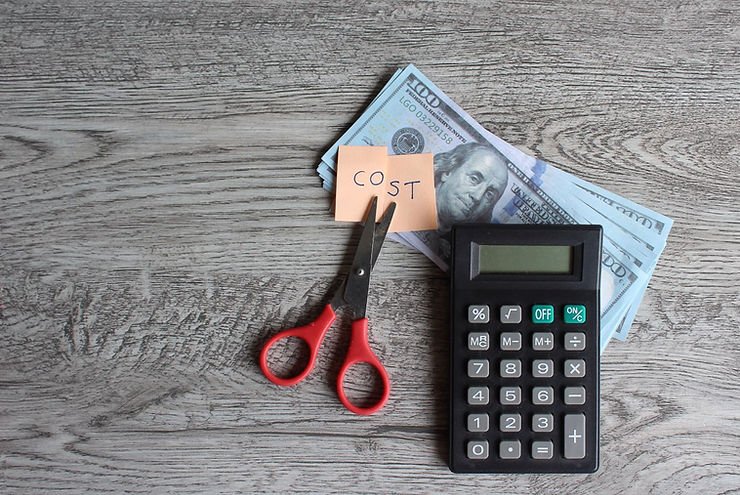Customer Acquisition Cost (CAC) is the total cost a business incurs to acquire a new customer, and it’s calculated by dividing the total costs of sales and marketing by the number of new customers acquired. To optimize your CAC, you can focus on improving your marketing campaigns’ efficiency and effectiveness, using targeted advertising, leveraging customer referrals, and optimizing your sales funnel. Additionally, you can increase your customer lifetime value (CLV) by providing excellent customer service, offering loyalty rewards programs, and building long-term customer relationships, which will help you reduce your CAC and increase your profitability over time.
Optimizing Customer Acquisition Costs (CAC) for E-commerce Businesses
In the world of e-commerce, customer acquisition is a key challenge businesses face. With so many competitors vying for the attention of online shoppers, businesses need to invest in marketing and sales tactics that will help them stand out and attract new customers. Every advertising campaign, every sales promotion, and every free shipping offer represents an expense that must be accounted for. CAC is the total cost an e-commerce business incurs to acquire a new customer. It includes all the marketing and sales expenses that the business has to incur in order to persuade a customer to make a purchase. This can include advertising expenses, platform fees, shipping costs, and more. Why is CAC important for e-commerce businesses? Because it directly impacts the profitability of the business. The lower the CAC, the higher the profit margins, as the business is able to acquire customers at a lower cost. One of the primary reasons why CAC is such a critical metric for e-commerce businesses is the competitive landscape of the industry. With many businesses offering similar products and services, it can be difficult to stand out and attract new customers. In order to do so, businesses need to invest in marketing and sales tactics that are effective and efficient. There is no one-size-fits-all solution when it comes to customer acquisition. Every business is unique, and every target audience is different. Therefore, businesses need to experiment with different marketing and sales tactics to see what works best for their particular audience. This is where CAC comes in. Calculating the cost of acquiring a new customer can determine whether their marketing and sales tactics are effective and efficient. If the CAC is too high, it may indicate that the business needs to refine its tactics, either by targeting a different audience or by adjusting its messaging and branding.
CAC is an important metric for e-commerce businesses because it can help them identify areas for improvement. By tracking and analyzing data on CAC over time, businesses can identify trends and patterns that can inform their marketing and sales strategies. Optimizing CAC is a critical task for any e-commerce business that wants to grow and succeed over the long term. By reducing the cost of acquiring new customers, businesses can improve their profitability and increase their ability to invest in other areas of the business, such as product development or customer service, where Customer Acquisition Cost (CAC) is a critical metric for e-commerce businesses.
How to Calculate CAC for E-commerce: A Guide for Businesses

As an e-commerce business owner, one of your key priorities is to acquire new customers. However, acquiring customers comes at a cost. This is where Customer Acquisition Cost (CAC) comes in. CAC is the total cost an e-commerce business incurs to acquire a new customer. By calculating CAC, businesses can determine the effectiveness and efficiency of their marketing and sales tactics.
Step 1: Determine the Timeframe
The first step in calculating CAC is to determine the timeframe you want to analyze. Depending on the nature of your business, you may want to calculate CAC on a monthly, quarterly, or annual basis.
Step 2: Calculate the Total Cost of Sales and Marketing
Once you have determined the timeframe you want to analyze, the next step is to calculate the total cost of sales and marketing during that period. This includes all the expenses that are directly related to acquiring new customers. Some examples of these expenses include:
Advertising Expenses
This includes the cost of running ads on social media, Google Ads, or other advertising platforms.
Platform Fees
This includes the fees that e-commerce businesses have to pay to use online platforms like Amazon, eBay, or Shopify.
Shipping Costs
This includes the cost of shipping products to customers, as well as any packaging and handling expenses.
Sales Team Salaries
This includes the salaries, commissions, and bonuses paid to the sales team for acquiring new customers.
Marketing Software Subscriptions
This includes the cost of any marketing software or tools that the business uses to acquire new customers, such as email marketing software, CRM software, or social media management tools.
Step 3: Calculate the Number of New Customers Acquired
The next step is to calculate the number of new customers that were acquired during the timeframe you are analyzing. This can be done by simply counting the number of customers who made a purchase during that period. If you use a customer relationship management (CRM) system, you can also use that data to track the number of new customers acquired.
Step 4: Divide the Total Cost by the Number of New Customers

Once you have calculated the total cost of sales and marketing and the number of new customers acquired, the final step is to divide the total cost by the number of new customers. This will give you the CAC for the timeframe you are analyzing. For example, if your e-commerce business spent $10,000 on advertising, shipping, platform fees, and salaries during the last quarter, and acquired 500 new customers during that period, your CAC would be $20 ($10,000 / 500 = $20). Why is calculating CAC important for e-commerce businesses? Because it helps businesses determine the effectiveness and efficiency of their marketing and sales tactics. Tracking and analyzing CAC data over time can help businesses identify areas for improvement. For example, if a business notices that its CAC is increasing over time, it may indicate that its marketing campaigns are becoming less effective or that it is targeting the wrong audience. Calculating CAC is a critical task for any e-commerce business that wants to optimize its customer acquisition strategies.
By tracking and analyzing data on CAC over time, businesses can identify trends and patterns that can inform their marketing and sales strategies. For example, businesses can experiment with different advertising channels, messaging, and targeting to see which tactics are most effective in acquiring new customers. It’s also important to note that CAC is just one metric that e-commerce businesses should consider when evaluating the effectiveness of their marketing and sales strategies. Businesses should also track and analyze other metrics, such as conversion rates, average order value, and customer lifetime value, to get a more complete picture of their customer acquisition efforts.

By determining the cost of acquiring a new customer, businesses can identify areas for improvement and refine their marketing and sales tactics to improve effectiveness and efficiency. To further optimize CAC, e-commerce businesses can experiment with different marketing and sales tactics to see what works best for their particular audience.
Ways to Optimize CAC for E-commerce: Strategies for Success
Acquiring new customers is a key challenge for any e-commerce business. This is where Customer Acquisition Cost (CAC) comes in.
CAC is the total cost an e-commerce business incurs to acquire a new customer. By optimizing CAC, e-commerce businesses can improve their profitability, increase customer lifetime value, and ultimately grow their business over the long-term.
Improve the Targeting and Messaging of Marketing Campaigns
One of the most effective ways to optimize CAC is to improve the targeting and messaging of marketing campaigns. By targeting the right audience and delivering the right message, e-commerce businesses can improve the conversion rates of their marketing campaigns and reduce the cost of acquiring new customers. To improve targeting, businesses can use customer data to identify the characteristics of their most valuable customers. For example, businesses can analyze customer demographics, purchase history, and behavior to identify trends and patterns that can inform their targeting strategies.
To improve messaging, businesses can experiment with different ad copy, images, and offers to see what resonates most with their target audience. By testing and optimizing ad creative, businesses can improve the effectiveness of their marketing campaigns and reduce the cost of acquiring new customers.
Leverage Customer Referrals
Another effective way to optimize CAC is to leverage customer referrals. Referral marketing is a powerful way to acquire new customers at a lower cost than traditional marketing tactics. By encouraging existing customers to refer their friends and family, e-commerce businesses can tap into a highly engaged and motivated audience that is more likely to convert.
To encourage referrals, businesses can offer incentives such as discounts, loyalty points, or exclusive content. By incentivizing referrals, businesses can motivate existing customers to spread the word about their products and services, which can lead to lower CAC and higher customer lifetime value.
Optimize the Sales Funnel

Optimizing the sales funnel is another effective way to reduce CAC and improve customer acquisition. Streamlining the path to purchase and removing any barriers that may be preventing customers from converting can improve conversion rates and reduce the cost of acquiring new customers.
To optimize the sales funnel, businesses can analyze the different stages of the customer journey and identify areas for improvement. For example, businesses can analyze website analytics to identify pages with high bounce rates, optimize the checkout process to reduce shopping cart abandonment, and provide excellent customer support to increase customer satisfaction and retention.
Provide Exceptional Customer Service
Providing exceptional customer service is another effective way to optimize CAC. By providing excellent customer service, businesses can increase customer satisfaction and loyalty, which can lead to higher customer lifetime value and lower CAC. To provide exceptional customer service, businesses should focus on delivering fast, friendly, and helpful support across all channels. This can include offering live chat support, providing easy-to-find contact information, and responding quickly to customer inquiries and issues.
Use Data Analytics to Monitor and Optimize CAC
Finally, one of the most effective ways to optimize CAC is to use data analytics to monitor and optimize marketing and sales strategies. By tracking and analyzing data on CAC, businesses can identify trends and patterns that can inform their marketing and sales tactics. To use data analytics to optimize CAC, businesses should track and analyze metrics such as conversion rates, average order value, and customer lifetime value. By analyzing these metrics, businesses can identify which marketing and sales tactics are most effective in acquiring new customers and increasing customer value. By reducing the cost of acquiring new customers, businesses can improve their profitability and increase their ability to invest in other areas of the business, such as product development or customer service. Tracking and analyzing CAC data over time can continually refine their marketing and sales strategies to improve their effectiveness and efficiency.
To optimize CAC, e-commerce businesses can use a variety of strategies, including improving the targeting and messaging of marketing campaigns, leveraging customer referrals, optimizing the sales funnel, providing exceptional customer service, implementing a loyalty program, and using data analytics to monitor and optimize CAC. By using these strategies, businesses can reduce the cost of acquiring new customers, increase customer lifetime value, and ultimately grow their business over the long-term.
Increasing Customer Lifetime Value (CLV) for E-commerce: Strategies for Success
As an e-commerce business owner, acquiring new customers is important, but keeping them coming back is equally crucial. Customer Lifetime Value (CLV) is the total amount of revenue a customer generates over the course of their relationship with a business. By increasing CLV, e-commerce businesses can improve their profitability and grow their business over the long term.
Personalize the Customer Experience

One of the most effective ways to increase CLV is to personalize the customer experience. By understanding the unique needs and preferences of individual customers, businesses can deliver tailored experiences that foster long-term loyalty and repeat purchases. To personalize the customer experience, businesses can use customer data to analyze purchasing behavior and preferences. This can include analyzing purchase history, browsing behavior, and demographic data to identify trends and patterns that can inform personalization strategies.
Businesses can then use this data to tailor their marketing and sales tactics, such as sending personalized email campaigns, offering customized product recommendations, and providing targeted promotions and discounts.
Offer Exceptional Customer Service
Offering exceptional customer service is another effective way to increase CLV. By providing fast, friendly, and helpful support across all channels, businesses can increase customer satisfaction and loyalty, which can lead to higher CLV and lower churn rates. This can include providing live chat support, offering easy-to-find contact information, and responding quickly to customer inquiries and issues. To offer exceptional customer service, businesses should focus on delivering a seamless and consistent customer experience across all touchpoints.
Businesses can go above and beyond by offering personalized support, such as providing proactive notifications and anticipating customer needs. By providing exceptional customer service, businesses can differentiate themselves from competitors and foster long-term loyalty and repeat purchases.
Implement a Loyalty Program
Implementing a loyalty program is another effective way to increase CLV. By incentivizing repeat purchases and rewarding loyal customers, businesses can increase customer lifetime value and reduce churn rates. To implement a loyalty program, businesses can offer rewards such as discounts, exclusive content, or early access to new products. By providing valuable incentives to loyal customers, businesses can encourage them to continue making purchases and referring their friends and family, which can lead to higher CLV and lower churn rates.
Loyalty programs can also serve as a valuable source of customer data. By tracking and analyzing loyalty program data, businesses can identify trends and patterns in customer behavior and preferences, which can inform marketing and sales strategies.
Offer Upsell and Cross-Sell Opportunities
Offering to upsell and cross-sell opportunities is another effective way to increase CLV. By recommending complementary products or higher-priced items, businesses can increase the average order value and overall revenue generated by each customer. Businesses can then use this data to personalize recommendations and promotions based on each customer’s unique interests and preferences. By providing relevant and valuable upsell and cross-sell opportunities, businesses can increase CLV and overall revenue. To offer upsell and cross-sell opportunities, businesses can use customer data to identify purchasing behavior and preferences. This can include analyzing purchase history and browsing behavior to identify opportunities for recommending complementary products or higher-priced items.
Provide an Exceptional Post-Purchase Experience
Providing an exceptional post-purchase experience is another effective way to increase CLV. By delivering a seamless and positive experience after the initial purchase, businesses can foster long-term loyalty and repeat purchases. To provide an exceptional post-purchase experience. Businesses can also provide personalized product recommendations, promotions, and follow-up support to ensure customer satisfaction and encourage repeat purchases. By addressing customer feedback and pain points, businesses can improve the overall customer experience and increase CLV over the long term.
Leverage Social Media and Influencer Marketing

Leveraging social media and influencer marketing is another effective way to increase CLV. By building a strong social media presence and partnering with influencers and advocates, businesses can increase brand awareness and foster long-term loyalty and repeat purchases. To leverage social media and influencer marketing, businesses should focus on building a strong brand presence across relevant social media platforms. This can include regularly posting high-quality content, engaging with followers and customers, and using social media to drive traffic and sales to the e-commerce store. Businesses can also partner with influencers and advocates in their industry to increase brand awareness and drive sales. By partnering with influencers who have a strong following and influence in the target audience, businesses can tap into a highly engaged and motivated audience that is more likely to convert and become loyal customers. By providing a personalized customer experience, offering exceptional customer service, implementing a loyalty program, offering to upsell and cross-sell opportunities, providing an exceptional post-purchase experience, and leveraging social media and influencer marketing, businesses can increase CLV and grow their business over the long term.
It also requires a deep understanding of customer behavior and preferences, as well as a commitment to delivering exceptional customer experiences at every touchpoint. By focusing on these strategies, e-commerce businesses can differentiate themselves from competitors and foster long-term loyalty and repeat purchases, leading to higher CLV and overall revenue.
Retargeting Strategies for E-commerce: How to Re-engage Abandoned Shoppers
Retargeting is a powerful way to re-engage shoppers who have visited an e-commerce website but have not yet made a purchase. By targeting these “abandoned shoppers” with relevant ads and promotions, e-commerce businesses can increase conversion rates and reduce shopping cart abandonment. We will discuss some practical retargeting strategies that e-commerce businesses can use to re-engage abandoned shoppers and increase sales.
Use Dynamic Product Ads
Dynamic product ads are a highly effective retargeting strategy for e-commerce businesses. These ads use data on the specific products that a shopper has viewed or added to their cart to deliver targeted ads that showcase those products. Dynamic product ads can be displayed across multiple channels, including social media and display advertising. By showing shoppers the exact products they are interested in, dynamic product ads can increase the likelihood of conversion and reduce shopping cart abandonment. Businesses can use dynamic product ads to showcase complementary products or similar products that may be of interest to the shopper. This can increase the average order value and overall revenue generated by each customer.
Offer Incentives and Discounts
Offering incentives and discounts is another effective retargeting strategy for e-commerce businesses. By offering a discount or promotion to shoppers who have abandoned their shopping cart, businesses can incentivize them to return to the website and complete their purchase. Businesses can also offer incentives and discounts to shoppers who have viewed or added items to their cart but have not yet made a purchase. By offering a time-limited discount or free shipping promotion, businesses can increase the likelihood of conversion and reduce shopping cart abandonment.
Use Retargeting Emails

Emails are another effective way to re-engage abandoned shoppers. These emails can be sent to shoppers who have viewed or added items to their cart but have not yet made a purchase. By reminding them of the items they are interested in and offering incentives or discounts, businesses can increase the likelihood of conversion and reduce shopping cart abandonment. It can also be used to showcase complementary or similar products that may be of interest to the shopper. Businesses can use retargeting emails to provide helpful information or support, such as offering a link to customer support or providing information on shipping and delivery times.
Use Abandoned Cart Pop-Ups
Abandoned cart pop-ups are a highly effective retargeting strategy for e-commerce businesses. These pop-ups appear when a shopper attempts to leave the website without completing their purchase. By offering an incentive or discount, businesses can incentivize the shopper to complete their purchase and reduce shopping cart abandonment. Businesses can also use abandoned cart pop-ups to showcase complementary or similar products that may be of interest to the shopper. By providing relevant and valuable recommendations, businesses can increase the likelihood of conversion and overall revenue generated by each customer.
Use Retargeting on Social Media
Retargeting on social media is another effective way to re-engage abandoned shoppers. By using data on the specific products that a shopper has viewed or added to their cart, businesses can deliver targeted ads on social media platforms such as Facebook and Instagram. Retargeting on social media can be particularly effective as it allows businesses to reach shoppers across multiple touchpoints and devices. Businesses can use social media retargeting to showcase complementary or similar products that may be of interest to the shopper.
Use Retargeting on Google Ads
Retargeting on Google Ads is another effective way to re-engage abandoned shoppers. Retargeting strategies can have a significant impact on the overall customer acquisition costs (CAC) for e-commerce businesses. By re-engaging abandoned shoppers who have already shown interest in the business and its products, retargeting strategies can help businesses to convert these shoppers into paying customers, without having to invest additional marketing resources in acquiring new customers. Retargeting strategies can help to improve the efficiency and effectiveness of marketing campaigns by targeting shoppers who are more likely to convert and generate revenue. This can ultimately reduce the CAC for e-commerce businesses, as they are able to generate more revenue from their existing customer base without having to acquire new customers at a higher cost. Therefore, by combining retargeting strategies with other customer acquisition and retention strategies, such as optimizing the sales funnel, offering exceptional customer service, and implementing a loyalty program, e-commerce businesses can optimize their CAC and improve their profitability over the long-term.
How Retargeting Strategies Will Help to Optimize Customer Acquisition Costs (CAC)

To optimize CAC, the business implements retargeting strategies to re-engage these abandoned shoppers and convert them into paying customers. The business uses dynamic product ads to showcase the specific products that each shopper was interested in, along with complementary or similar products that may be of interest to them. The business offers incentives and discounts to shoppers who have abandoned their shopping carts or have viewed items but not yet made a purchase. These incentives may include free shipping or a time-limited discount. The business uses retargeting emails and abandoned cart pop-ups to remind shoppers of the items they were interested in and offer helpful information and support, such as links to customer support or information on shipping and delivery times. Implementing these retargeting strategies is able to re-engage abandoned shoppers and increase the likelihood of conversion. This, in turn, reduces the CAC for the business as they are able to generate more revenue from their existing customer base without having to invest additional marketing resources in acquiring new customers. Furthermore, by leveraging retargeting strategies alongside other customer acquisition and retention strategies, such as providing exceptional customer service and implementing a loyalty program, the business is able to optimize their CAC and improve their overall profitability over the long term. Provide an exceptional post-purchase experience by offering proactive notifications and personalized recommendations. So, by combining these retargeting strategies with other customer acquisition and retention strategies, the e-commerce business can optimize its CAC and improve profitability over the long term.
Calculating and optimizing customer acquisition costs (CAC) is essential for the success of any e-commerce business. To calculate CAC, businesses should divide their total marketing and sales expenses by the number of customers acquired over a specific period. To optimize CAC, e-commerce businesses can implement various strategies, such as optimizing the sales funnel, providing exceptional customer service, implementing a loyalty program, offering to upsell and cross-sell opportunities, providing an exceptional post-purchase experience, leveraging social media and influencer marketing, and using retargeting strategies to re-engage abandoned shoppers. By implementing these strategies, e-commerce businesses can increase customer lifetime value (CLV), reduce shopping cart abandonment, and improve profitability over the long term. Furthermore, businesses should continuously monitor and analyze their CAC and adjust their strategies as necessary to ensure optimal results.
Finally, optimizing CAC requires a deep understanding of customer behavior and preferences, as well as a commitment to delivering exceptional customer experiences at every touchpoint. Focusing on these strategies can differentiate themselves from competitors, foster long-term loyalty and repeat purchases, and ultimately grow their business over the long term. If you love what you read, you can engage with us here and let us help you to grow your e-commmerce.

